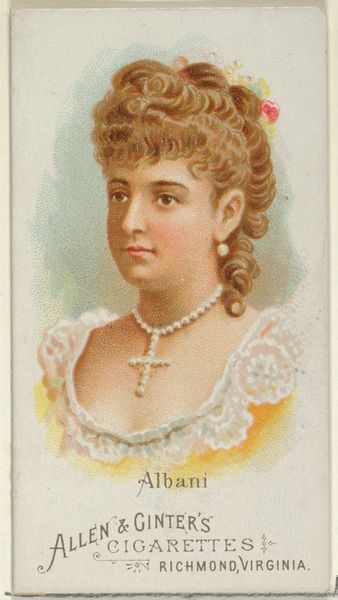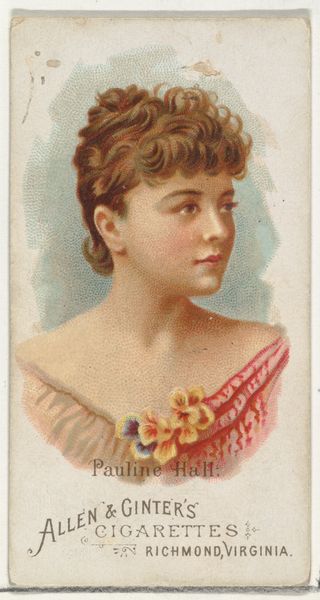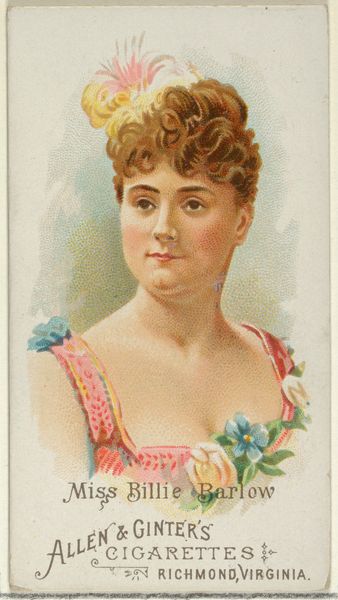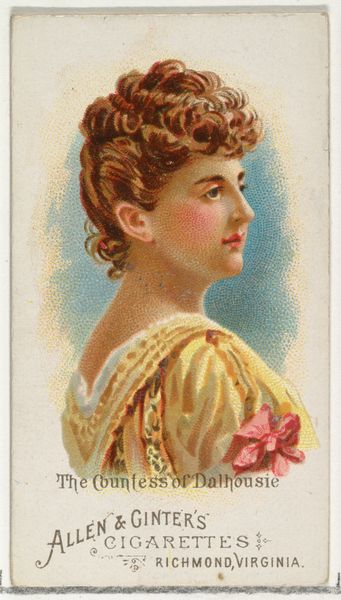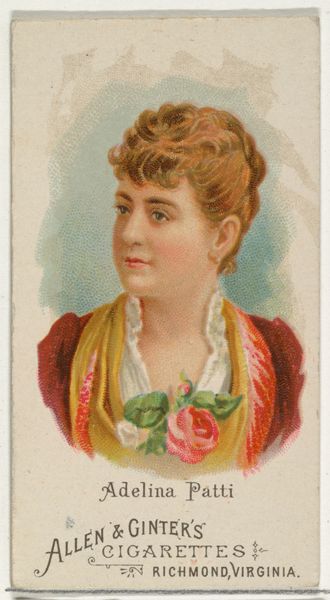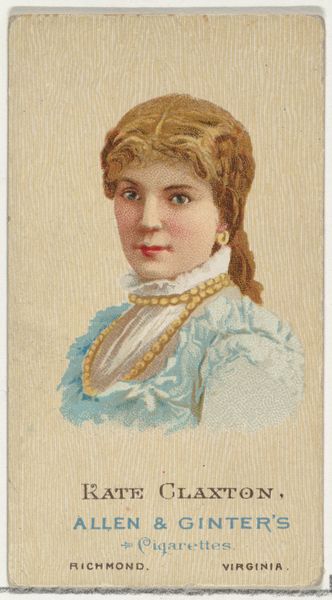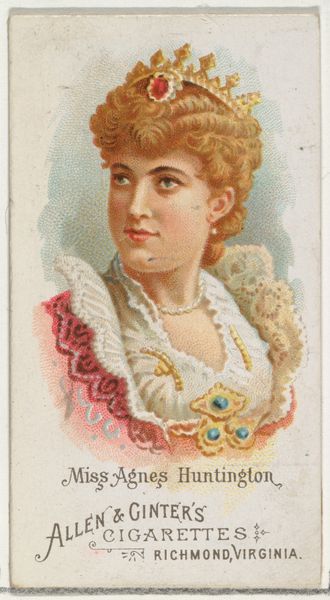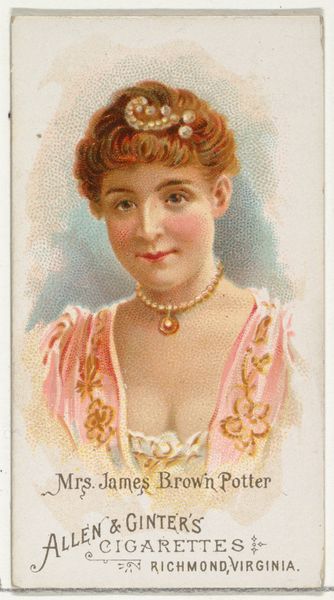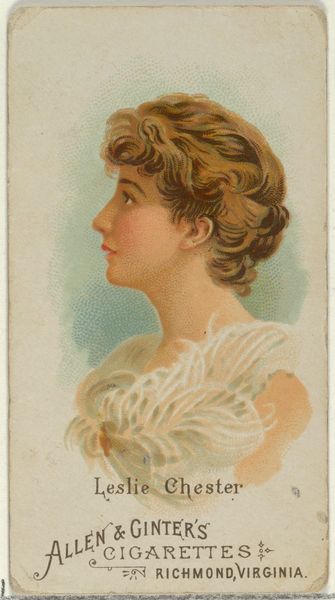
Actress wearing yellow beaded bodice, from Stars of the Stage, First Series (N129) issued by W. Duke, Sons & Co. to promote Honest Long Cut Tobacco 1890
0:00
0:00
drawing, print
#
portrait
#
drawing
# print
#
impressionism
#
portrait drawing
#
portrait art
#
profile
Dimensions: Sheet: 4 3/16 × 2 1/2 in. (10.6 × 6.4 cm)
Copyright: Public Domain
Curator: This is an advertising card dating back to 1890, part of the "Stars of the Stage" series issued by W. Duke, Sons & Co. to promote their Honest Long Cut Tobacco. It depicts an actress in a yellow beaded bodice. What are your first impressions? Editor: My initial reaction is to the process. The detail, the use of tiny dots...it's really fascinating how much they managed to convey in such a small printed format with period lithographic techniques. The lace bodice also stands out—labor-intensive then and now, machine made or not! Curator: Absolutely. Consider the cultural context. Actresses were becoming celebrities, and tobacco companies were quick to capitalize on their fame. These cards were essentially early forms of mass media advertising. It is amazing that an industrial brand leveraged artistic printing as popular visual culture for the masses. Editor: That’s interesting, because it merges artistic representation with industrial production, a perfect emblem of capitalism, creating desire. Also, how the image itself serves as a miniature, consumable object, and also a promotional one, makes it particularly telling. Curator: Right, and the image is itself interesting. It's a mass-produced print, yet it strives for a kind of elegant portraiture typically reserved for higher social classes. This conflation served the promotional goals very well. It associated "honest" tobacco use with aspirations of beauty, status and stage artistry. Editor: Looking at the materiality, too – it makes me wonder about the source image and the lithographers crafting of it. Was there a photoshoot or painted prototype? And this card stock paper – the feel of it in peoples’ hands while ingesting this idealized, branded image…so tactile and multi-sensory. Curator: That kind of material history is fascinating, I agree. To consider this image's original distribution and reception, understanding its wider influence is also interesting to me: this was one example of a period trend in associating stage fame with commodities in rapidly expanding consumer culture. Editor: It’s interesting to consider the life cycle here. An image made for profit, circulating now in a museum…how meaning shifts. And that actrice herself remains so anonymous and voiceless here. Curator: Yes, and examining the social function of these images, even a century later, prompts crucial questions around value, representation, and cultural legacy. It is nice to be reminded of the many layers of history embedded within seemingly simple advertising artifacts. Editor: Indeed. And for me, it throws into sharp relief the human effort and skill involved in every stage, production to consumption, in these tokens, even within an inherently exploitative system like commercial advertisement.
Comments
No comments
Be the first to comment and join the conversation on the ultimate creative platform.

